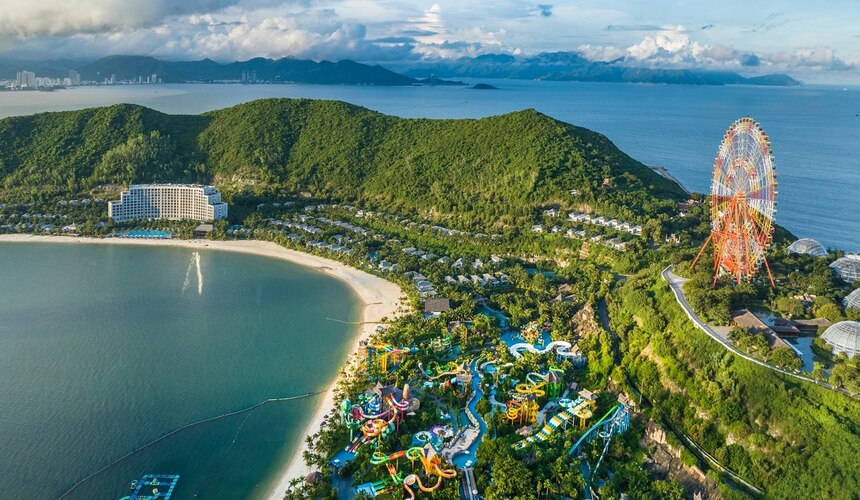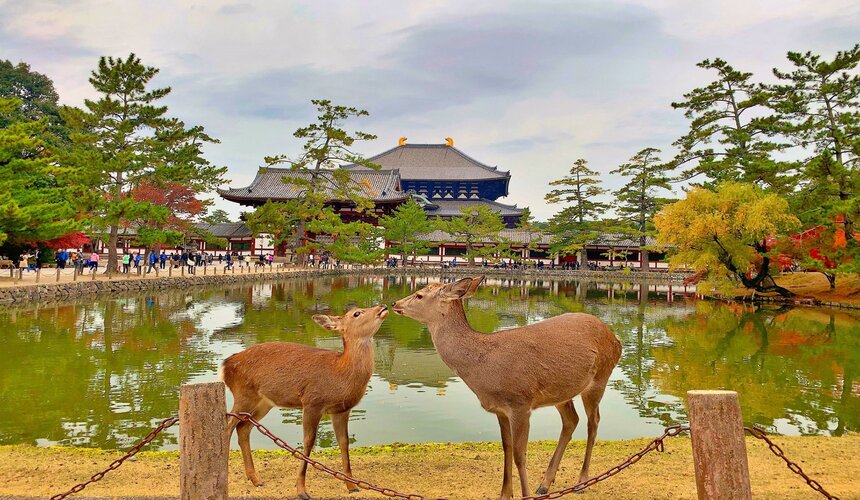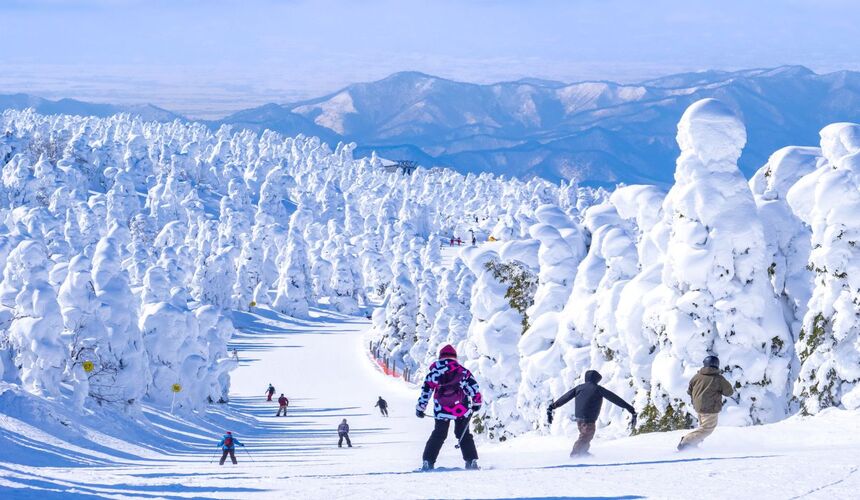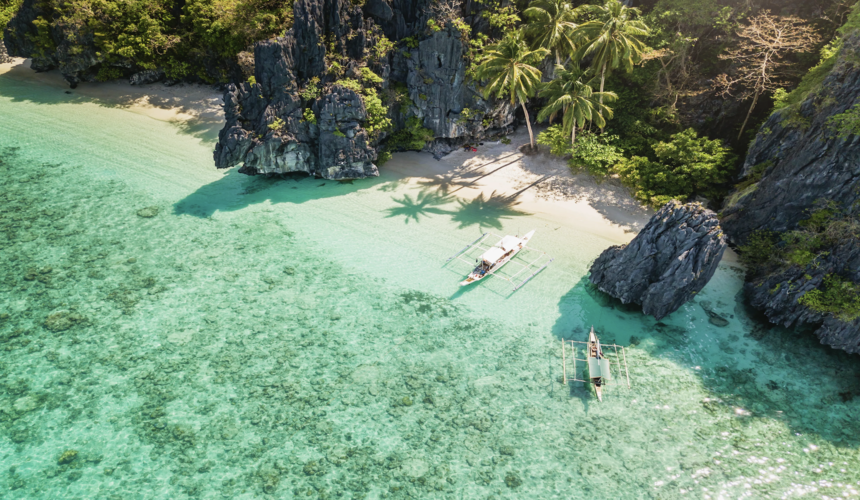
10 Underrated Places to Visit in Asia According to Locals
Asia is a vast and vibrant continent, bursting with iconic landmarks and bustling cities that draw millions of travelers each year. Asia is a treasure trove of underrated destinations that even many locals keep as their best-kept secrets. These hidden gems offer a chance to experience authentic culture, breathtaking landscapes, and peaceful escapes far from the crowds.
In this article, we will take you on a journey through 10 underrated places across Asia that locals love. Places where you can immerse yourself in genuine traditions and discover the true spirit of the region. Whether you’re craving serene nature, vibrant street life, or cultural immersion, these spots promise unforgettable memories off the beaten path. Ready to explore Asia like a local? Let’s dive in.
1. Bohol, Philippines: Beyond the Chocolate Hills
Bohol is beloved by locals for its stunning natural beauty and rich cultural heritage. While the Chocolate Hills are famous, much of Bohol remains off the typical tourist radar. Its secluded beaches, hidden waterfalls, and traditional fishing villages offer an authentic experience away from crowds. The island’s mix of Spanish colonial churches and indigenous traditions adds to its unique charm.
Location: Bohol Island, Central Visayas, Philippines
Best Time to Visit: Dry season from November to May, with the best weather typically between February and April.
How to Get There: Bohol is accessible via direct flights to Panglao International Airport from Manila and Cebu. Ferries also connect Bohol to Cebu and other nearby islands.
Top Things to Do
- Visit the Chocolate Hills for panoramic views and hiking trails.
- Explore the Philippine Tarsier Sanctuary to see one of the world’s smallest primates.
- Relax at Panglao Island’s white sandy beaches and dive spots.
- Cruise the Loboc River while enjoying a floating restaurant experience.
- Discover hidden waterfalls like Mag-Aso Falls and Dimiao Twin Falls.
- Visit the centuries-old Baclayon Church and Blood Compact Shrine.
Local Recommendations
- Rent a scooter or hire a local guide to explore off-the-beaten-path spots.
- Try local delicacies like calamay (sweet sticky rice cake) and freshly caught seafood.
- Attend the Sandugo Festival in July, celebrating Bohol’s historic blood compact treaty.
- Use reef-safe sunscreen to protect the coral reefs while snorkeling or diving.
- Beware of the weather during the rainy season (June to October) as some roads can get slippery.

2. Luang Prabang, Laos: A Serene UNESCO World Heritage Town
Locals treasure Luang Prabang for its peaceful atmosphere and deep spiritual heritage. The town is a hub of traditional Lao culture, with vibrant Buddhist temples and daily almsgiving rituals that are integral to local life. Though recognized as a UNESCO World Heritage site, Luang Prabang remains less commercialized than many other Southeast Asian destinations.
Location: Luang Prabang Province, Northern Laos
Best Time to Visit: The dry season from November to February, offering cool and comfortable weather.
How to Get There: Luang Prabang has a small international airport with flights from Bangkok, Hanoi, and other regional hubs.
Top Things to Do
- Witness the daily morning alms-giving ceremony where monks collect offerings.
- Visit Wat Xieng Thong, one of Laos’s most important and beautiful temples.
- Explore Kuang Si Falls, a multi-tiered waterfall with turquoise pools perfect for swimming.
- Stroll the night market for handmade crafts and delicious street food.
- Take a boat trip on the Mekong River to visit Pak Ou Caves, filled with thousands of Buddha statues.
- Climb Mount Phousi for panoramic views of the town and sunset over the river.
Local Recommendations
- Respect local customs during the almsgiving ceremony by dressing modestly and remaining quiet.
- Try traditional Lao dishes such as “larb” (minced meat salad) and sticky rice.
- Visit early in the morning to avoid crowds at popular temples.
- Rent a bicycle to explore nearby villages and countryside at your own pace.
- Support local artisans by purchasing handwoven textiles from the night market.

3. Nara, Japan: Ancient Traditions Amid Peaceful Deer
The city’s friendly deer roam freely through parks and temples, creating a unique and peaceful environment loved by residents and visitors. Nara’s traditional festivals and well-preserved heritage sites foster strong local pride. Often overshadowed by nearby Kyoto and Osaka, Nara offers a quieter, less commercialized alternative for exploring Japan’s cultural heart.
Location: Nara Prefecture, Kansai Region, Japan
Best Time to Visit: Spring (March to May) for cherry blossoms or autumn (September to November) for vibrant fall foliage.
How to Get There: Nara is easily accessible by train from Kyoto (about 45 minutes) and Osaka (about 40 minutes). The Kintetsu and JR lines connect these cities frequently, making day trips convenient.
Top Things to Do
- Visit Todai-ji Temple to see the massive Great Buddha statue (Daibutsu).
- Feed and interact with the friendly deer in Nara Park.
- Explore Kasuga Taisha Shrine, famous for its hundreds of stone and bronze lanterns.
- Wander through the picturesque Isuien Garden and Yoshikien Garden.
- Discover the Nara National Museum’s collection of Buddhist art.
- Attend local festivals like the Wakakusa Yamayaki (grass burning) festival in January.
Local Recommendations
- Buy “deer crackers” (shika senbei) from vendors in Nara Park to feed the deer. Please be gentle, as the deer can be eager!
- Visit early in the morning or late afternoon to avoid crowds at popular sites.
- Try local specialties such as kakinoha sushi (persimmon leaf-wrapped sushi) at nearby restaurants
- Rent a bicycle to explore the city’s quieter neighborhoods and temples.
- Respect temple etiquette: bow, remove shoes where required, and speak softly.

4. Gyeongju, South Korea: The Museum Without Walls
Locals take pride in Gyeongju’s rich historical legacy as the ancient capital of the Silla Kingdom. The city’s vast archaeological sites, royal tombs, and cultural artifacts are woven into daily life. Make it a living museum that locals cherish for both education and cultural identity. A more intimate and immersive experience of Korea’s ancient heritage.
Location: North Gyeongsang Province, South Korea
Best Time to Visit: Spring (April to June) and autumn (September to November) offer mild weather and stunning natural colors.
How to Get There: Gyeongju is accessible by train or bus from major cities like Seoul and Busan. The KTX high-speed train connects Seoul to nearby Singyeongju Station in about 2 hours, followed by a short bus or taxi ride.
Top Things to Do
- Explore Bulguksa Temple, a UNESCO World Heritage Site and a masterpiece of Buddhist architecture.
- Visit Seokguram Grotto, an exquisite stone sanctuary overlooking the Sea of Japan (East Sea).
- Wander through Tumuli Park to see the royal burial mounds of Silla kings.
- Discover the Gyeongju National Museum’s extensive collection of artifacts.
- Stroll around Anapji Pond, beautifully illuminated at night.
- Experience traditional Korean tea ceremonies at local tea houses.
Local Recommendations
- Rent a bike to explore the historical sites at your own pace.
- Visit early in the morning to enjoy peaceful temple grounds before the crowds arrive.
- Try local delicacies such as “haejangguk” (hangover soup) and “ssambap” (rice wrapped in leafy greens).
- Attend the Gyeongju Cherry Blossom Marathon in spring if visiting during that season.
- Respect site regulations, especially at UNESCO World Heritage locations.
5. Gili Islands, Indonesia: Quiet Beaches and Crystal Waters
The islands are a beloved getaway for Indonesians seeking relaxation, snorkeling, and diving without the crowds found in nearby Bali. Compared to the bustling tourist scenes of Bali, the Gili Islands offer a more relaxed atmosphere with no motorized vehicles allowed. Preserving the peaceful environment. Each of the three islands, Gili Trawangan, Gili Air, and Gili Meno, has its own unique charm.
Location: Off the northwest coast of Lombok, West Nusa Tenggara, Indonesia
Best Time to Visit: The dry season from April to October offers the best weather for beach activities and diving.
How to Get There: The Gili Islands can be reached by fast boat or ferry from Bali (Padang Bai or Serangan harbors) or Lombok (Bangsal harbor). Regular boat services connect the islands to mainland Lombok.
Top Things to Do
- Visit local markets and sample fresh seafood.
- Try stand-up paddleboarding or kayaking around the islands.
- Relax on white sandy beaches and soak in stunning sunsets.
- Explore Gili Trawangan’s nightlife with beach bars and live music.
- Enjoy peaceful retreats on Gili Meno, perfect for honeymooners or quiet reflection.
- Snorkel or dive in crystal-clear waters teeming with turtles and vibrant coral reefs.
Local Recommendation
- Bring reef-safe sunscreen to protect the fragile marine ecosystem.
- Rent a bicycle or walk to explore the islands, as motorized vehicles are banned.
- Visit early in the morning or late afternoon to avoid crowds at popular snorkeling spots.
- Try local Sasak dishes such as “ayam taliwang” (spicy grilled chicken) and fresh grilled fish.
- Be mindful of tides and boat schedules when planning day trips.

6. Sapa, Vietnam: Mountain Retreat Amongst Rice Terraces and Ethnic
Its breathtaking mountainous landscapes and vibrant ethnic minorities offer a refreshing escape from the lowland heat. The town is a cultural melting pot where indigenous groups like the Hmong, Dao, and Tay preserve centuries-old traditions and colorful festivals. The iconic terraced rice fields, traditional stilt houses, and tribal markets offer an immersive experience rarely found elsewhere.
Location: Lào Cai Province, Northern Vietnam
Best Time to Visit: Spring (March to May) and autumn (September to November) when the weather is mild and the rice terraces are vibrant.
How to Get There: Sapa is accessible by overnight train or bus from Hanoi to Lào Cai, followed by a scenic drive or bus ride up the mountain to the town.
Top Things to Do
- Trek through terraced rice fields to remote hill tribe villages like Cat Cat, Ta Phin, and Lao Chai.
- Visit the bustling Sapa Market to shop for handmade textiles and local produce.
- Climb Fansipan Mountain, known as “The Roof of Indochina,” for panoramic views.
- Experience local festivals, such as the Hmong New Year, featuring traditional music and dance.
- Explore Silver Waterfall and Love Waterfall for stunning natural scenery.
Local Recommendations
- Hire local guides from the ethnic communities to support sustainable tourism and gain authentic insights.
- Pack layered clothing as mountain weather can be unpredictable and chilly, especially at night.
- Try traditional dishes such as “thang co” (a Hmong horse meat stew) and freshly brewed mountain tea.
- Respect local customs, ask permission before photographing people, especially in villages.
- Book trekking tours in advance during peak seasons to secure your spot.

7. Kuching, Malaysia: A Laid-Back City Rich in Culture and Nature
Kuching is easy access to lush rainforests and wildlife. While much of Malaysia’s tourism focuses on Kuala Lumpur or Penang, Kuching remains a hidden gem on the island of Borneo. It’s the gateway to orangutan sanctuaries, tribal longhouses, and national parks. Few international tourists know just how much natural and cultural variety this city offers.
Location: Sarawak, Malaysian Borneo
Best Time to Visit: May to September is the dry season, offering the best weather for outdoor activities and wildlife spotting.
How to Get There: Kuching International Airport has direct flights from Kuala Lumpur, Singapore, and several regional cities. The city center is just a 15–20 minute ride from the airport by taxi or ride-hailing apps.
Top Things to Do
- Visit Semenggoh Wildlife Centre to see semi-wild orangutans in their natural habitat.
- Wander along the Kuching Waterfront, lined with cafes, colonial buildings, and river cruises.
- Explore Bako National Park, known for its jungle trails, wildlife (like proboscis monkeys), and hidden beaches.
- Discover the city’s history at the Sarawak Museum and Brooke Gallery at Fort Margherita.
- Stroll through Carpenter Street and India Street for antiques, local crafts, and food.
- Visit Kuching Cat Museum for a quirky experience. “kuching” means cat in Malay!
Local Recommendations
- Don’t miss trying Sarawak laksa, a spicy noodle soup loved by locals.
- For a more local experience, stay in a traditional Iban longhouse outside the city through a guided eco-tour.
- Take a sunset river cruise for a scenic view of the city skyline and stilt villages.
- Use Grab (the local ride-hailing app) for affordable and reliable transportation.
- Wear comfortable shoes for exploring national parks and be prepared for humidity.

8. Jeju Island, South Korea: Volcanic Beauty and Island Serenity
Jeju Island is South Korea’s favorite escape for honeymooners and nature lovers. It’s a place where people slow down, enjoy fresh seafood, and reconnect with nature. Famous for its volcanic landscapes, lava caves, and ancient stone walls offer a side of Korea most tourists never see. The island’s UNESCO-listed sites and legendary haenyeo (female divers) reflect deep-rooted cultural uniqueness.
Location: Jeju Province, off the southern coast of South Korea
Best Time to Visit: April to June (spring) and September to November (fall) for mild weather, blooming flowers, and fewer tourists.
How to Get There: Frequent domestic flights from Seoul (1 hour) or Busan land at Jeju International Airport. Ferries are also available from ports like Mokpo, though less commonly used by travelers.
Top Things to Do
- Hike Hallasan Mountain, South Korea’s tallest peak, right in the center of the island.
- Explore Manjanggul Lava Tube, one of the world’s longest lava tunnels.
- Visit Seongsan Ilchulbong (Sunrise Peak) at dawn for breathtaking views.
- Relax at Hamdeok or Hyeopjae Beach, known for their emerald waters and white sand.
- Watch traditional haenyeo women dive without scuba gear for abalone and sea urchins.
- Wander through Jeju Folk Village to experience life in old Jeju.
- Visit quirky attractions like Loveland or the Teddy Bear Museum.
Local Recommendation
- Try Jeju black pork BBQ, mandarin oranges, and fresh abalone porridge.
- Stay in a hanok-style guesthouse or a seaside pension for a more traditional experience.
- Bring layers. Jeju’s weather can change quickly, especially in the mountains.
- Avoid peak summer (July–August) if you want to skip crowds and heavy humidity.

9. Pokhara, Nepal: Lakeside Bliss and Himalayan Views
Pokhara nestled beside Phewa Lake and framed by the towering Annapurna range. One of the best places to meditate or set off on life-changing treks. It’s the gateway to the Annapurna Circuit, but even non-trekkers can enjoy stunning Himalayan views right from the lakeside. Fewer crowds and relaxed vibes make Pokhara a must-visit gem that’s still off the beaten path for many international travelers.
Location: Gandaki Province, central Nepal
Best Time to Visit: October to December (post-monsoon) and March to May (pre-monsoon) offer clear skies and great weather for trekking and sightseeing.
How to Get There: From Kathmandu, you can reach Pokhara by a 6–8 hour scenic bus ride or a quick 30-minute domestic flight. Private tourist buses and taxis are also available.
Top Things to Do
- Take a peaceful boat ride on Phewa Lake, and visit the Tal Barahi Temple on its island.
- Hike or drive up to Sarangkot for sunrise views over Annapurna and Machapuchare (Fishtail Mountain).
- Visit the World Peace Pagoda, a serene hilltop stupa overlooking the city
- Explore Devi’s Falls, Gupteshwor Cave, and International Mountain Museum.
- Try paragliding, one of the best places in the world to soar over lakes and mountains.
- Begin or end a trek through the Annapurna Conservation Area.
Local Recommendations
- Stay in Lakeside Pokhara, the traveler-friendly area with cafes, yoga studios, and mountain views.
- Don’t miss trying local Thakali dal bhat, momos, or Himalayan herbal teas.
- For a calm experience, wake up early and walk along the lake before the crowds arrive
- If trekking, hire local guides and porters to support the community and navigate safely.

10. Alishan, Taiwan: Misty Forests and Mountain Sunrises
Alishan offers a peaceful escape from the city and a deep connection to nature. Cherished by hikers, photographers, and families seeking tranquility. Unlike other mountain destinations in Asia, Alishan is easily accessible and offers a mix of natural beauty and cultural experiences without the extreme altitude or crowds. The forest is home to sacred trees over 2,000 years old, and the area holds deep spiritual significance for Taiwan’s indigenous Tsou people.
Location: Chiayi County, central Taiwan
Best Time to Visit: Spring (March to April) for cherry blossoms and clear skies. Autumn (October to November) for crisp air and maple foliage. Avoid typhoon season (July–September) when the trails may be slippery or closed.
How to Get There: Take the high-speed rail (HSR) to Chiayi Station, then transfer to the Alishan Forest Railway or a bus to Alishan National Scenic Area. Drive takes about 2.5–3 hours from Chiayi.
Top Things to Do
- Ride the Alishan Forest Railway, a historic narrow-gauge train through lush mountain scenery.
- Wake up early to watch the legendary Alishan sunrise from Zhushan, with peaks emerging above a sea of clouds.
- Walk the Giant Tree Trail, a serene path among ancient red cypress trees.
- Visit the tranquil Sisters Ponds and Shouzhen Temple, nestled in the forest.
- Sample Alishan High Mountain Tea, grown in the cool mountain air for exceptional flavor.
Local Recommendations
- Book sunrise train tickets to Zhushan a day early. The seats fill up fast, especially during cherry blossom season.
- Dress in layers. It can be warm in Chiayi but cold in Alishan.
- Stay overnight in the Alishan Forest Recreation Area for the best access to trails and sunrise spots.
- Try wild wasabi dishes, bamboo rice, and tea-infused soft serve at local eateries.
- Respect the indigenous culture and take time to learn about the Tsou people’s heritage in nearby villages like Leye or Laiji.

These underrated destinations offer authentic experiences that will stay with you long after your trip ends. Ready to explore these secret spots in Asia? Let us help you plan your personalized adventure with local insights and stress-free travel support. Chat with us via WhatsApp: +86 187 2197 8867 or Email: info@expatsholidays.com. Your next unforgettable journey starts here.




